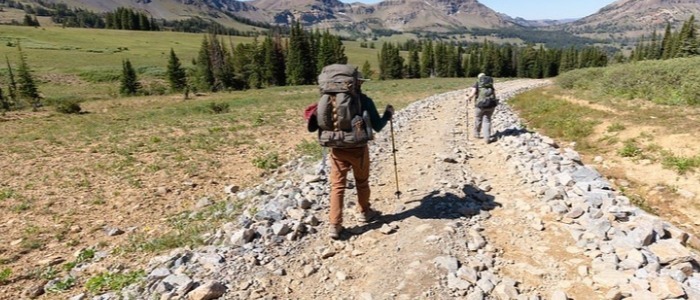If I’m totally honest, I don’t wear a lot of either Duck Down or Goose down clothing as I’ve always found synthetic clothing gave a better price to heat/quality ratio. That said, recently I’ve been looking for a winter sleeping bag which has brought up the conversation over duck and goose down sleeping bags versus synthetic.
In the summer, my synthetic sleeping bag is just perfect for my needs. It’s warm, packs tightly, and because you can dump it in the washing machine, I don’t tend to worry about it getting wet. That said, it’s warm for the summer months in the UK, but if the temperature starts to fall below zero, I think you need a slightly thicker down-filled material to keep you warm.
What is Down?
In layman’s language, you could swap the word “down‘ for ‘feathers‘. If you read hiking clothing reviews, you’ll often hear a jacket being described as a Down Hiking Jacket. This means that it is filled with bird feathers.
Down is an ideal material for all hiking clothing and sleeping bags as it breathes, draws moisture away from the body, and is one of the lightest materials used in making clothes. The principal drawbacks are both the price which is substantially higher than a regular synthetic jacket, and due to the design, if you do get a down jacket wet for example, it is both very heavy and takes a long time to dry.
Fill Power

Fill power is used to describe how warm that item of clothing is likely to be. In short, the higher the fill power, the more air per cubic inch the down can trap and thus the more insulating ability the down will have.
When you’re looking at backpacking and hiking gear, you’ll generally find the Fill Power scale ranges from 400 to around the 1000 point. A down jacket with 400 fill, such as a North Face Puffer Jacket, will be great for a cold day where your popping to the supermarket in the winter. If you want to be outside in the countryside in the winter, you’ll need to be looking at a jacket with a fill power between 850 and 1,000.
Durability and Weight
Both the duck down and geese down are highly durable and offer excellent insulation. These remain lightweight even when used in sufficient amounts in jackets. Since down releases unwanted moisture in the atmosphere, it helps in regulating its temperature, i.e., it keeps warm in winter and cool in summer.
If proper care is taken, then it can have a long life span. However, if you wash them down regularly, then it can become brittle, and the quality of the down will degrade. The heavier the item, the insulation will be all the more since they happen to trap the air to create better insulation.
Duck Vs. Goose
When we are comparing duck down to Goose down, you need first to realise that Goose down has a higher fill power when compared to duck down. This means that Goose down will offer more warmth when you compare warmth against weight.
Generally, the best hiking and backpacking clothing combines both Duck and Goose feathers, however, it also depends on the design. Typically, you have two choices when it comes to design, boxed or channel. A channel design allows the feathers to move along the channel, while a boxed layout limits their movement.
Price Vs. Insulation
The best down jacket would a very cheap, very warm coat. Sadly these two are almost always impossible to achieve. Goose offers substantially more insulation per cubic inch than duck, however it’s also significantly more expensive than duck down as the feathers are taken from mature birds that take time to grow. Duck is generally cheaper because its feathers are a by-product of a food source, rather than the bird is grown specifically for its feathers.
Final Thoughts
It’s important to remember that while Goose has a higher fill power than duck, a jacket with a 600 Fill Power will have the same insulation whether its a duck or a goose filled jacket.







